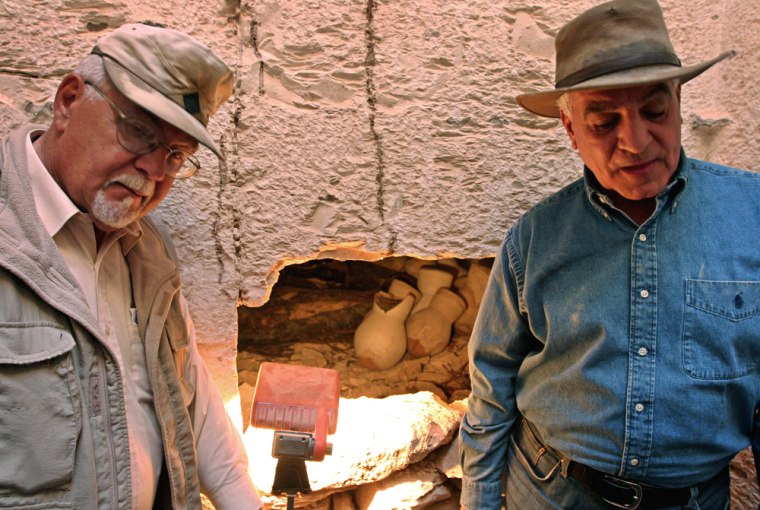A chamber discovered last month in the Valley of the Kings was a room used by the ancient Egyptians for mummifying pharaohs buried in the area, rather than a tomb, Egypt’s top archaeologist said Monday.
Zahi Hawass said five sarcophagi found in the chamber contained remnants of pottery, shrouds and materials used in mummification.
The American researchers from the University of Memphis who discovered the chamber had also opened 10 sealed jars found there to discover other materials used in mummification.
“This ... is not a tomb for nobles or relatives of a king, as had been thought upon its discovery, but rather it is a room for mummification,” Hawass said in a statement.
The chamber was found at the bottom of a 20-foot (6-meter) shaft. Hawass said last month that the sarcophagi may contain the mummies of royals or notables moved from their original graves to protect them from grave robbers.
Ancient Egyptians buried rulers including Tutankhamun in the Valley of the Kings, which lies close to the Nile town of Luxor. The sarcophagi date from the 18th Dynasty, which ruled Egypt from 1567 B.C. to 1320 B.C.
Tutankhamun’s tomb was discovered packed with treasures in 1922.
